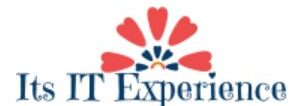IEEE 802 Standard
The Data Link Layer and IEEE
When we talk about Local Area Network (LAN) technology the IEEE 802 standard may be heard. This standard defines networking connections for the interface card and the physical connections, describing how they are done. The 802 standards were published by the Institute of Electrical and Electronics Engineers (IEEE). The 802.3 standard is called Ethernet, but the IEEE standards do not define the exact original true Ethernet standard that is common today. There is a great deal of confusion caused by this. There are several types of common Ethernet frames. Many network cards support more than one type.
The Ethernet standard data encapsulation method is defined by RFC 894. RFC 1042 defines the IP to link layer data encapsulation for networks using the IEEE 802 standards. The 802 standards define the two lowest levels of the seven layer network model and primarily deal with the control of access to the
network media. The network media is the physical means of carrying the data such as network cable. The control of access to the media is called media access control (MAC). The 802 standards are listed below:
· 802.1 – Internetworking
· 802.2 – Logical Link Control *
· 802.3 – Ethernet or CSMA/CD, Carrier-Sense Multiple Access with Collision detection LAN *
· 802.4 – Token-Bus LAN *
· 802.5 – Token Ring LAN *
· 802.6 – Metropolitan Area Network (MAN)
· 802.7 – Broadband Technical Advisory Group
· 802.8 – Fiber-Optic Technical Advisory Group
· 802.9 – Integrated Voice/Data Networks
· 802.10 – Network Security
· 802.11 – Wireless Networks
· 802.12 – Demand Priority Access LAN, 100 Base VG-AnyLAN *The Ones with stars should be remembered in order for network certification testing.
